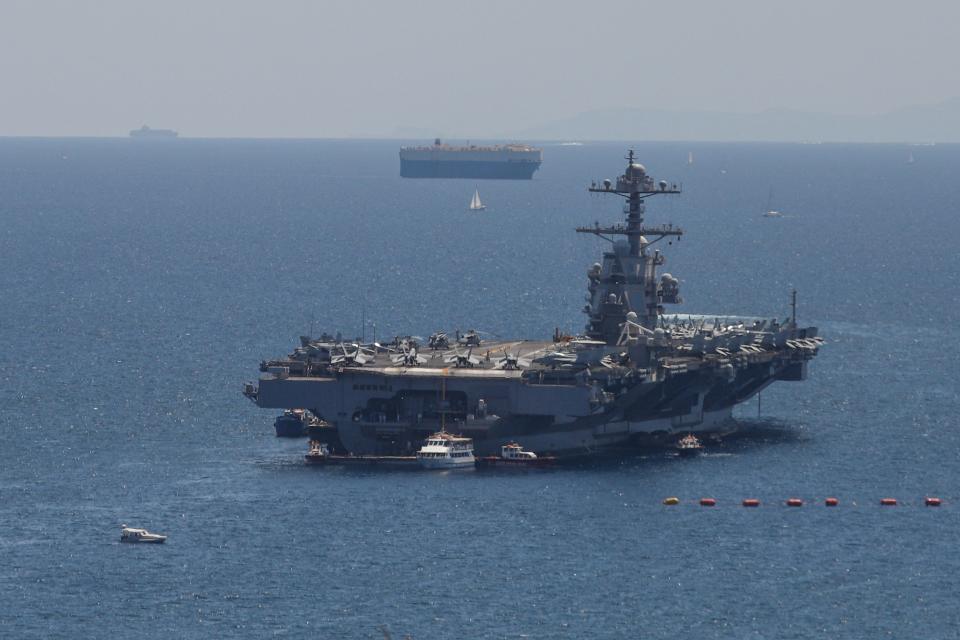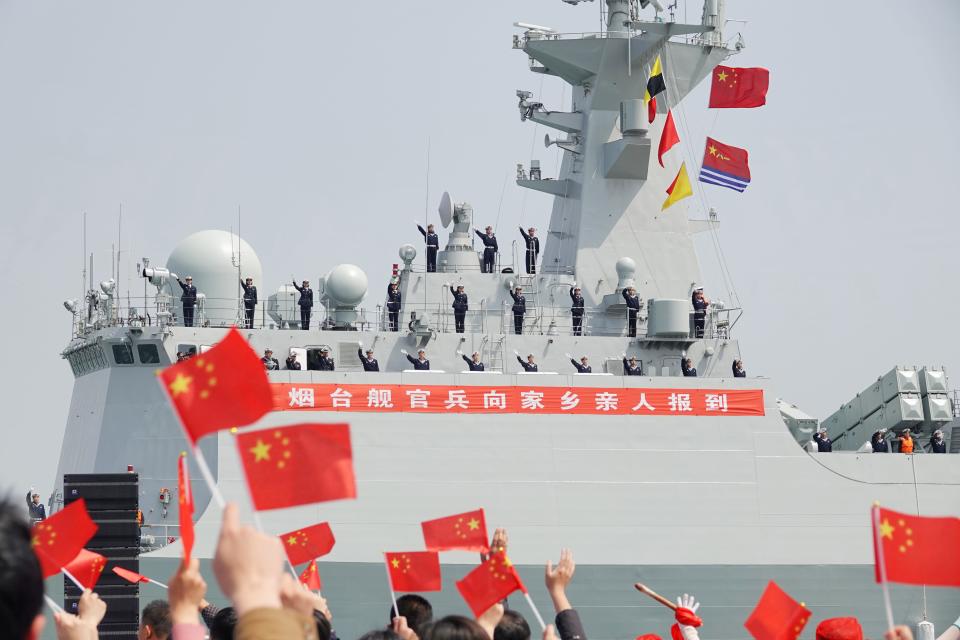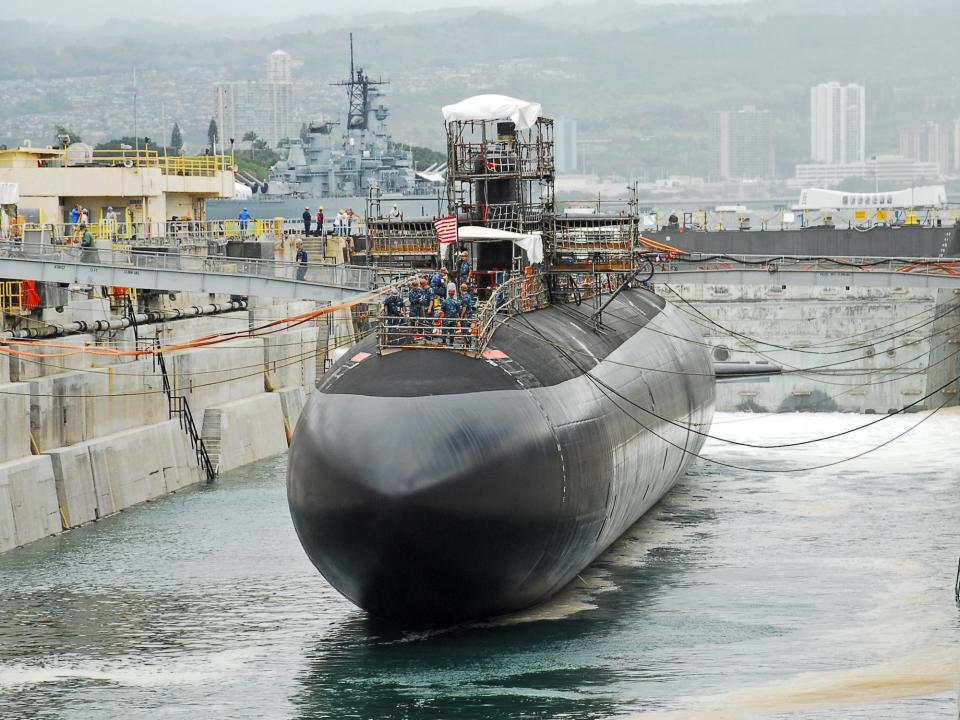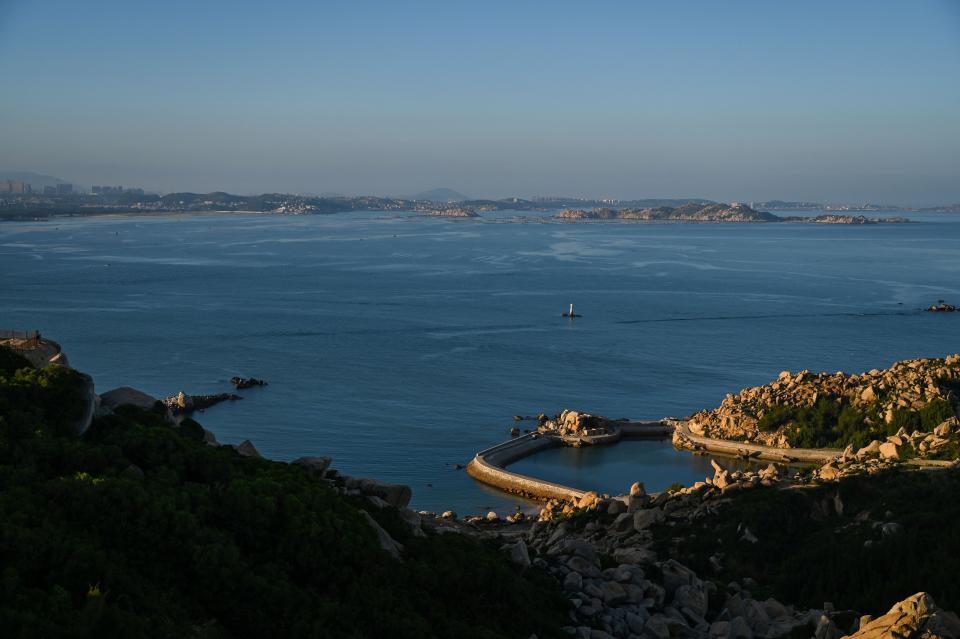As China's navy grows, the US fleet is on a 'downward trajectory,' maritime expert says
The threat of a conflict over Taiwan has put the spotlight on the US and Chinese navies.
The US Navy has been shrinking, meaning China's is now the world's largest.
A major decline in US shipbuilding capacity could be a problem in the future, analysts say.
The oceans are once again becoming a key geopolitical battleground.
In the Indo-Pacific, the aggressive shadow of China is growing. Meanwhile, sea-based drone warfare in the Black Sea between Russia and Ukraine and the Houthi rebels' disruption of commercial shipping in the Red Sea have become conflict hot spots.
"It's the end of the pacifist period on the seas," Dr Steven Wills of the Center for Maritime Strategy, told Business Insider.
The US fleet is still widely considered the world's most powerful navy due to its 11 aircraft carriers and cutting-edge nuclear submarine capabilities.
However, while maritime pressures have increased, US shipbuilding has stagnated.

"In the early 1990s, the Navy had over 500 ships. But over the course of the 2000s and 2010s, there was a failure to properly follow up naval deployments with enough time for refit, repair, and rest," Wills explained.
As subsidies and funding for maritime infrastructure were cut in the post-Cold War period, industry capabilities slowed. That was compounded by a series of costly shipbuilding blunders.
"The US Navy was really rudderless. They didn't have an idea what it wanted to do," Wills said.
The fleet is now down to just under 300 ships.
Doug Livermore, who until recently was a senior intelligence officer and director of sensitive activities and special operations in the Navy, admits it's "not as robust of a ramp-up as it should be."
In the latest budget released in March, plans for seven new Arleigh Burke-class destroyers were reduced to six. Just one rather than two Virginia-class nuclear-powered attack submarines will be added, while 19 ships will be decommissioned.
"They're scrapping more ships than they're building, which means the US Navy is on a downward trajectory, not an upward trajectory," said Dr Salvatore Mercogliano, a maritime historian at Campbell University.
China outpacing the US
China has overtaken the US Navy in numerical terms with about 370 vessels, according to the Pentagon's 2023 China Military Power Report.
It will grow to be at least 50% larger than America's by 2035, a retired admiral projected in the US Naval Institute's professional journal.

Submarines, which have historically given the US primacy over the sea, are a high priority for the People's Liberation Army Navy.
China operates 60 submarines, according to the Pentagon's latest estimates. That number is expected to rise to 80 by 2035, despite the ongoing retirement of older hulls. Most of its submarines are diesel-powered, but it also has nuclear-powered attack and ballistic missile submarines that have higher speeds and longer ranges.
The US operates 67 submarines, but not all are in the Pacific.
China's navy is still not as technologically advanced, only has two aircraft carriers, and the fleet has minimal active experience, but Livermore says the pace of expansion remains a concern.
"In the early 2000s, the Chinese navy had nothing that could rival US vessels. They were primarily diesel-powered submarines, a few old and loud nuclear-powered submarines. The speed of development is worrying," he said.
Quantity vs quality
The numbers only tell one part of the story, however. Despite its smaller size compared with China, the US Navy is still widely regarded as the world's most powerful.
In 2020, then Secretary of Defense Mark Esper said that even if the US stopped building ships, it would take years for China to match the US Navy's power due to its technological capabilities and expertise.
"Ship numbers are important, but they don't tell the whole story," he said.
Another piece of the puzzle is shipbuilding capacity. China is the world's largest shipbuilder. It could use its manufacturing capacity to rapidly build more ships in wartime.
Chinese shipyards have a capacity of about 23.2 million tons, compared to the US' capacity of less than 100,000 tons, according to figures from the US Office of Naval Intelligence that emerged last year.
David Sacks, fellow for Asia studies at the Council on Foreign Relations, told BI: "One of China's largest shipyards has more capacity than all US shipyards combined. We have to maintain ships as well as obviously build new platforms, and we don't have the workers or the facilities to do that."
Peacetime footing
Gone are the days when merchant ships were built in bulk in the US, capacities that America used to expand its fleet by more than 15 times in World War II. In an extended war, China is poised to rapidly build this kind of vast fleet — a capacity the US lacks.
Instead, the US defense industrial base still finds itself on a post-Cold War peacetime footing, analysts told BI.
Expanding American shipbuilding capacity ought to start now, Wills said: "You don't make the arsenal of democracy overnight."
"The composition of the Navy is a long-term issue. If you want to start changing force structure, it takes time," Mercogliano said.
But given that Japan and South Korea now dominate commercial shipbuilding, some doubt whether this is a realistic or viable option.
That could have consequences in wartime. "It would be very hard to rapidly ramp up and replace battlefield losses just given the current state of the industry," Wills said. "That's not the industry's fault — they can only operate based on what the government gives them."

Taiwan tensions
Rising tensions over Taiwan are another reason some are questioning the size and shape of the US fleet.
Taiwan has been self-governed since 1949, but China sees it as a breakaway province that should be under its control.
While there have been no official signals about a looming conflict with Taiwan, China's leader Xi Jinping has said that he believes unification is inevitable and has refused to rule out using force to achieve that goal.
As a democratic ally in the region and home to a leading AI chipmaker in the form of TSMC, securing Taiwan's freedom is a key strategic and economic goal for the US.
Last month, the commander for the Indo-Pacific told lawmakers that Beijing would be ready to invade Taiwan by 2027.
If that ever happens, analysts fear the US Navy could find itself on the back foot.

The Council of Foreign Relations' Sacks pointed to a 2023 CSIS report that said the US would run out of many key munitions for a conflict over Taiwan within the first two weeks.
China's home advantage would also be significant, said Wills. "They're fighting a local game in their backyard whereas the US and everybody else, except Japan, is waging an away game. There are long logistics needed to make that happen."
"I think there ought to be a greater level of urgency here. I'm not seeing it," he added.
Countering Chinese aggression in the Indo-Pacific took center stage this week at the first-ever trilateral meeting between the US, Japan, and the Philippines.
The US announced more than $1 billion worth of private sector investment in chips and infrastructure to support the region and said security cooperation in the South China Sea had increased to "historic levels."
In the week leading to the summit, the three countries and Australia held their first joint maritime military exercises in a further show of unity.
Read the original article on Business Insider

